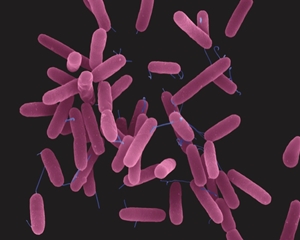Molecular biologists and engineers at Princeton University in New Jersey discovered that bacterial formations called biofilms can quickly tangle and trap other bacteria, disabling medical devices. The study by postdoctoral researcher Knut Drescher and colleagues appears online in a recent issue of Proceedings of the National Academy of Sciences (paid subscription required).
Drescher, working in the lab of co-author and molecular biologist Bonnie Bassler, simulated the flow of fluids through implanted devices like stents, and supporting equipment like water filters that are susceptible to contamination. The team monitored the flow through narrow tubes and pores devised with rough rather than smooth surfaces and pressure-driven fluid, conditions not found in previous studies, according to the authors.
The researchers introduced a small number of Pseudomonas aeruginosa bacteria, considered an opportunistic pathogen of humans, to the test fluid that the researchers monitored. The Pseudomonas aeruginosa bacterium causes infections in a wide range of human tissue, and is a particularly serious problem among patients with compromised immune systems.
The first test bacteria, dyed green for identification and tracking, attached to the inner wall of a tube in the simulated device and began to multiply, forming a slimy biofilm coating. Biofilms are thousands of individual cells that mass together in microbial communities.
A second set of bacteria were sent through the tubes, this time dyed red. The red-colored cells became stuck in the biofilm caused by the first set of bacteria, forming streamers that started to slow the flow of fluid. After about 55 hours, however, the steamers became tangled into a barrier resembling a net that trapped even more bacteria. About an hour later, report the researchers, the entire tube became blocked and the fluid flow stopped.
As important as the behavior of the bacteria and biofilms was the speed at which the clogging occured. “For me the surprise was how quickly the biofilm streamers caused complete clogging,” said Princeton engineering professor and co-author Howard Stone. “There was no warning that something bad was about to happen.”
Read more:
- Binding Process Developed for Antimicrobial Surfaces
- Self-Cleaning Surfaces Tested that Emulate Natural Models
- Polymer Materials Discovered That Resist Bacteria Attachment
- Liquid Coating Prevents Biofilm Build-Up on Surfaces
- Selenium Found to Control Staph Bacteria on Implant Material
* * *


 RSS - Posts
RSS - Posts
You must be logged in to post a comment.